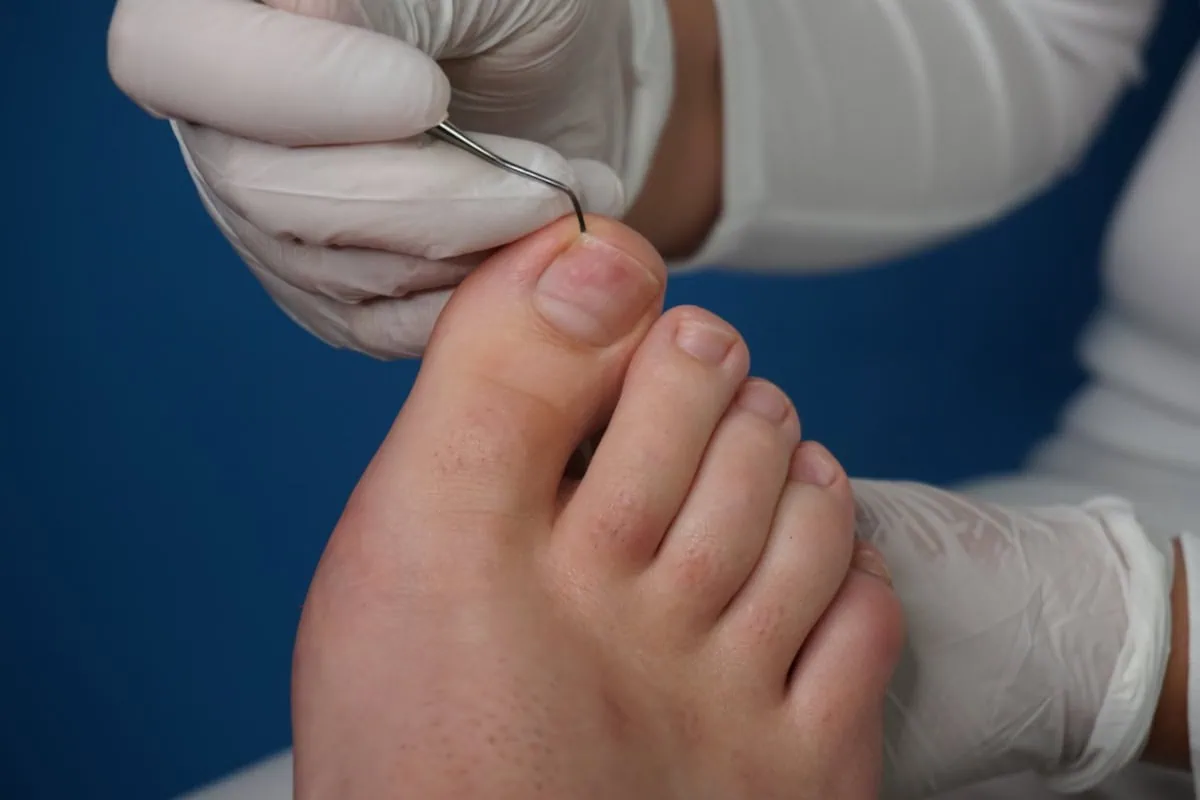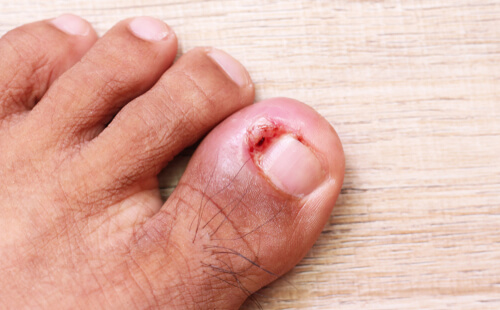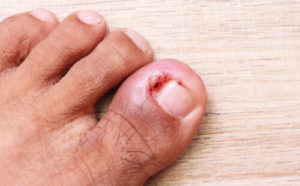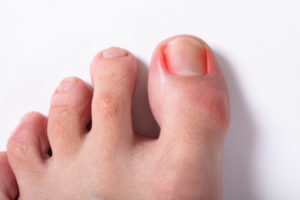
An ingrown nail is one of the most common foot complaints that patients have. As a foot specialist, it is one of the most common issues that we help our patients with on a daily basis, and it is a problem that is not very well understood by patients in terms of the cause and how simple it can be treated to give them a permanent solution.
What Is An Ingrown Toenail?
I have often been asked by patients to look at their nail and am asked to tell them if it is ingrown. The only way to know if a nail is ingrown is if it hurts! Not to oversimplify, but there are many nails that are curving into the flesh on one side or both sides of the nail and there is no pain. The bottom-line question is, do you have pain?
Pain could be mild or severe with some redness to the large portion of the nail and evidence of pus draining from the area. Many patients manage their ingrown nails by cutting back on the sides of the nails themselves or by going to the beauty salon where they may offer temporary management of the nail.
Causes Of Ingrown Nails
Toenail Fungus
Fungal nail infection can deform the toenails, causing them to curve in on the side of the nail. The thickening that is caused by the fungus can lead to a thicker nail and when a shoe is worn, it can cause the nails to be pushed down on the flesh on one or both sides of the nail. In more severe cases, a thick nail could even cause an ulcer beneath the central part of the nail bed. This is particularly important to avoid in patients with diabetes.
Trauma
If significant trauma occurs to the nail, blood can accumulate beneath the nail, causing it to partially be detached from where it attaches to the toe, or create a situation where, within days, the entire nail comes off. In either case, the new nail that grows out can become deformed. For many, a history of one or more traumatic episodes to the toenail can create deformity leading to an ingrown toenail.
Genetics
It is thought that for many, ingrown toenails can be inherited. This is frequently talked about during patient encounters when patients mention that one of their parents or other immediate family member has an ingrown nail history.
Structural Deformity Of The Foot
If there is misalignment of the digits, it can cause the adjacent toes to rub against each other. A very classic example would be bunion deformity where the big toe angulates toward the second toe, and the more severe the angulation is, the greater the pain will be, causing irritation to the outer side of the great toenail.
How To Avoid Ingrown Toenail
The following are suggestions on how you may potentially avoid an ingrown nail:
- Shoe gear – make sure you wear comfortable shoe gear which does not cause too much pressure on the toes.
- Keep your feet clean and dry – this is an attempt to avoid toenail fungus. Even if you follow this guideline, you can still get toenail fungus, and early treatment should be done to reduce the progression of the fungal infection and reduce the possibility of ingrown toenail. Treatment of toenail fungus with laser has been an option for many of our patients to avoid nail surgery in certain situations.
Consider Seeking Professional Advice Early
If you have traumatized the nail, seeking a professional’s opinion is important in many cases, especially if the nail has been partially detached. The podiatrist may suggest removal of the traumatized nail as the likelihood of the new nail growing deformed is higher if the nail is not removed.
The Long-term Treatment Option You May Want To Consider
In the medical literature, permanent removal of the ingrown nail was first described in 1945. This ingrown toenail treatment described using a chemical called phenol to kill the cells that make the nail. This ingrown toenail surgery has remained the gold standard ever since. Amazingly, many patients are unaware that this option even exists. Many still think that they may have to have the entire nail removed or that if the edges are removed temporarily and allowed to grow back. This is rarely a recommendation from a foot specialist.
Phenol Matrixectomy
It is common in most podiatry clinics to treat ingrown nails on the first visit. The procedure has very low risk and has high benefits for the patient. The procedure involves using a local anesthetic block administered to the involved digit so there is no pain. The side of the nail that is grown in is removed, and this is called a nail avulsion. Phenol is then applied to the area where the nail was removed.
Phenol creates a chemical burn that destroys the cells that create the nail but also has the benefit of being a topical anesthetic, so patients have minimal pain after the procedure. They are able to wear shoes immediately and are able to work and be on their feet all day.
Most people do not require medication as the pain is usually minimal where the nail border was removed. After the procedure, the area may drain for up to 2 weeks and foot soaks and application of triple antibiotic may be the only treatment needed. In rare cases, (5% of the time) the border could return and the procedure needs to be repeated and the chemical is applied longer the second time. See video ingrown nail.
Based upon your presentation, your podiatrist may recommend doing one of the following:
- Remove one border or remove part of the nail that is causing symptoms.
- Remove both borders of the same toe that is causing the symptoms.
- In rare situations where the nail is very thick, usually from fungal infection, the entire nail is removed permanently.
Conslusion
If you have a red, swollen, severely painful nail or are simply getting tired of managing your ingrown nails, you may want to consider this low-risk, highly successful procedure.
Call us today at our Fort Collins location (970) 329-8158, Broomfield location (303) 997-2795, Surgery Center (970) 329-8158, or use our online scheduling system to book your appointment.

 What exactly is an ingrown toenail?
What exactly is an ingrown toenail?